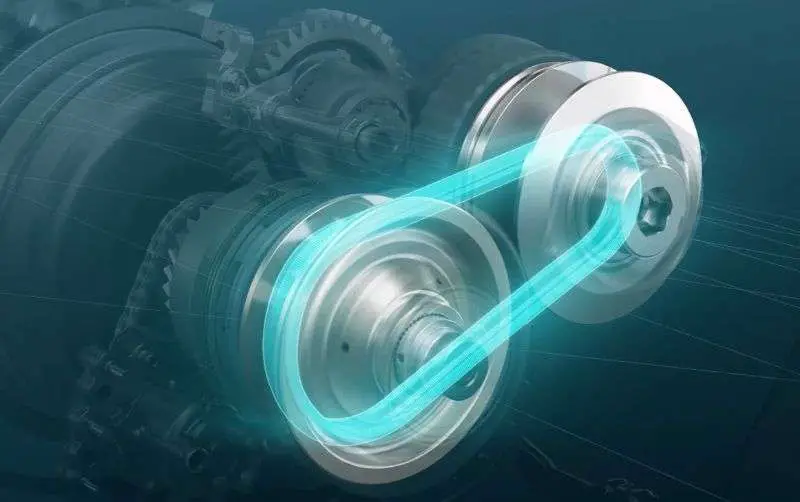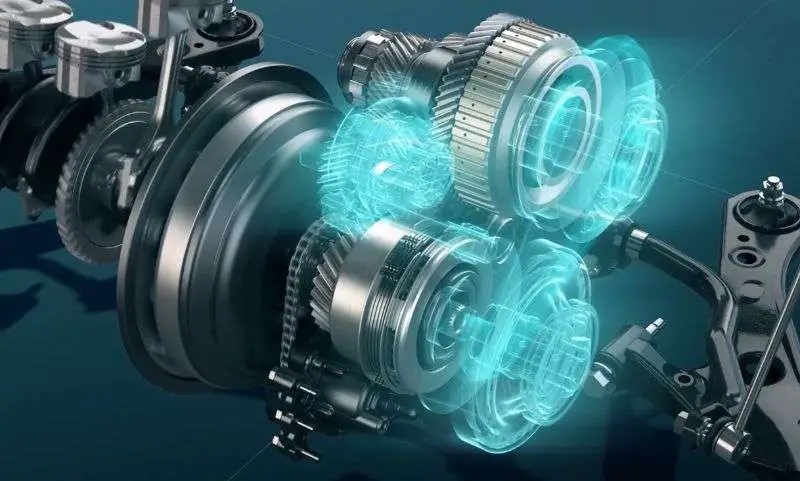CVT stands for Continuously Variable Transmission, and it’s an automated transmission that doesn’t shift gears. You’ve undoubtedly heard of CVT if you’re shopping for a new automobile. But what is the reliability of CVT transmission? Should you get one in your next car?
Here’s everything you need to know about CVT, as well as whether or not it’s right for you.
What is CVT Transmission?
Page Content
ToggleA CVT, also known as continuously variable transmission, operates in much the same way as a traditional automated gearbox (AT) but without the jerky movements common to such transmissions. It is also called shiftless or single-speed gearboxes.
The CVT’s constant angular velocity is due to its adaptability, which ensures steady angular speed at all speeds. A continuously variable gearbox also has lower fuel consumption and smooth acceleration.
The History of the CVT Transmission
The CVT has been in use for many years. Leonardo da Vinci developed it before there were motor cars, and Daimler and Benz patented it in 1886.
The CVT has been prevalent since the 1980s and now, every manufacturer offers at least one car with a continuously variable transmission. CVT is a type of automatic transmission that has been around for a long time. But they’ve been improved over the years to become more efficient.
How does it work
CVT systems use a different type of transmission. A pulley system is used instead, with cones at the top and bottom connected by a chain belt. The cones can be moved to change gear ratios or to make the car more fuel-efficient.

A CVT has two pulleys. One is connected to the engine and the other transmits power to the wheels. The diameter of these pulleys varies based on how much power they need, so it can give you a strong and smooth start.
There is a form of transmission known as Direct-Shift CVT that does not have any gears. A gear is added in this sort of automobile for improved take-off acceleration.
CVT combines the greatest elements of conventional transmissions and CVTs by allowing them to operate together as a single unit. The end result is a transmission that resembles a CVT at high speeds while retaining the benefits of a traditional gearbox at lower speeds.

So What is the Reliability of CVT Transmission?
CVT transmissions have been shown to improve fuel efficiency and are typically more dependable than typical automatic gearboxes. The majority of cars with CVT gearboxes have comparable dependability ratings to those with conventional counterparts. The newest technology is generally known to deliver consistent dependability that is connected to the dependability of other components.
CVT transmissions are intended to be almost maintenance-free, but they may be hampered by other elements. If the car is misaligned, it can cause issues with your CVT transmission.
Benefits of CVT Transmission
CVT transmissions have become more popular in vehicles lately because they provide several advantages. One of the most notable advantages is that CVTs decrease emissions while also improving gas mileage, which benefits the environment and saves customers money on fuel expenses.
CVT transmissions are lighter than other types of gearboxes, resulting in lower vehicle weight. It makes driving extremely simple since there’s no need for the driver to put out any effort.
The CVT is a lot less expensive to build and install than a regular automatic gearbox, which helps to keep vehicle prices lower for customers.

Drawbacks of CVT Transmission
One disadvantage of CVT gearboxes is that they aren’t well-suited to high-performance driving, which is why you won’t see many CVT gearboxes on sports coupes or performance cars.
Another disadvantage is that it might take some time for drivers to get used to driving a CVT vehicle. Because there are no gears in a CVT car, it feels strange. People who are accustomed to driving an automobile with gears may need some time to adjust.
What to Look For When Buying a Used Car
Aside from the reliability of CVT transmission, when you purchase a used car, you should have it inspected for safety and dependability, as well as see if any remaining manufacturer warranty is still valid. A vehicle inspection would reveal any issues with the automobile or ones that it may have in the near future. CVT transmissions can suffer from a variety of failures. If the gear shift takes longer than a second or two to change gears, it might be an indication of a failing CVT that will soon break down, affecting the overall CVT transmission reliability.
It’s critical to have a smooth ride while driving. When accelerating, you should notice a continuous and fluid shift in speed. If it stutters or loses power, the CVT has broken down. A warning signal goes up if you hear an abnormal amount of noise when increasing speed.
Transmission fluid should be clear. If it’s not, the problem might be with the CVT or other problems.
Should you buy a CVT transmission car?
If you want to save money and be environmentally friendly, you should choose a car with a CVT gearbox.
The CVT has fewer moving components than a traditional gearbox, so it will require less upkeep. This is especially true when it comes to the cost of the vehicle in terms of dollars and years.
The CVT is a continuously variable transmission with paddle shifters. It allows your car to go faster and use less gas because of the infinite gear ratio variation that it permits while remaining in one location. As a result of their lower RPMs and fewer gear changes, most of these vehicles get better gas mileage owing to their higher constant speed operation.
If, on the other hand, you’re searching for high-performance automobiles or the feeling of driving a traditional transmission, this isn’t the selection for you.

What are the best CVT vehicles that you can buy right now?
CVTs are popular because of the smoothness they provide in town and thanks to their popularity among hybrid car producers, particularly Toyota.
CVT gearboxes, on the other hand, are generally quite dependable and provide outstanding fuel efficiency. When you want to pull away, they give powerful acceleration right now. The CVT is available in a variety of Toyota vehicles, such as the Corolla, Corolla Cross, RAV4 Hybrid and a number of other vehicles. Click ahead to see whether they come equipped with the features you want!
Conclusion
Hope you now understand what is CVT Transmission! Naturally, the reliability of CVT transmission can be a huge deciding factor when you make a car purchase.
Even Toyota’s current line offers a number of CVT Transmission cars such as the Corolla! Do you own a vehicle with a CVT transmission or have you ever considered one? Leave a remark below to let us know whether you drive a car with a CVT gearbox or not!



I recently bought a Nissan Note 1.2 DIG-S Tekna petrol automatic 65 plate.35000 miles on clock from a Bristol Street Motor franchise.
I don’t know if transmission oil has been changed, recommend 30000 – 60000 manufacture spec.
The V5C document had no previous owners names on it. I’ve since found that there has been at least 5 previous owners, 2 being Lease Hire, through researching online.
I also had to print off my own MOT Cert, which I’d asked for prior to purchase.
I was informed by a Hyundai/Nissan dealership ,that an MOT Cert is not mandatory , everything is digitalised now.How would I then know when MOT is due, that being the case?